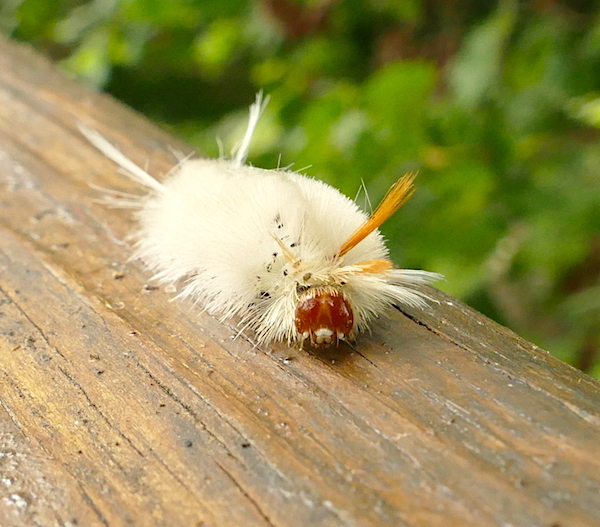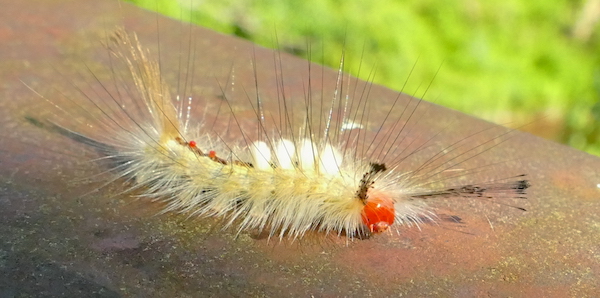Top Photo: Sycamore tussock moth caterpillar crawls along railing.
If there are sycamore trees in the area you’re likely to run into one or more of these fuzzy, tufted caterpillars. The adult sycamore tussock moth has tan wings crossed with slightly darker bands on translucent membranes.

More common and widespread than the sycamore tussock moth caterpillar, is the white-marked tussock moth caterpillar. It’s been reported munching on over 140 host plants including conifers.

White-marked tussock moth’s adult form is a small, gray/brown moth, the kind of thing many people think of when they think “moth.” The male has two white marks on its wings, the source of its common name. Unique here, the adult female is flightless.

Cardinal flower is blooming in the wetlands. It’s a plant that “likes to keep its feet wet.” You won’t find it away from a stream bank or lake shore. Of course, you can grow them in your garden if you’re liberal with the water.

Green herons are also closely tied to the water. Fish, tadpoles, aquatic insects, and frogs are some of it’s favorite foods, all residing in water.


Most likely to be seen making haste across an open path, male trapdoor spiders wander about looking for mates. The rest of their time is spent in a hole in the ground topped with a silken, hinged lid. If you hassle them they’ll likely turn and stand their ground.

Passionflower is blooming. Here, the native and small-flowered variety was photographed just outside the entrance to the Lemur House. Note its three-lobed leaves.


And finally, a gray squirrel scratches an itch.
